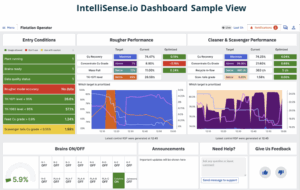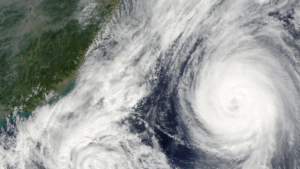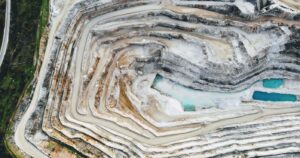Green is the New Gold: Smarter, Cleaner Mining
In Part 1, we explored how AI is revolutionizing mineral discovery by making exploration faster, cheaper, and more precise. Now, we turn to what happens after the discovery: how AI and digital tools are transforming mining operations themselves into smarter, safer, and more sustainable processes.
From Discovery to Delivery: Operations Need Innovation Too
Finding minerals is just the beginning. Once a deposit is identified, miners face the equally critical challenge of operating efficiently, sustainably, and profitably.
Mining operations involve massive machines, complex processing plants, tailings dams, and intricate supply chains. Even small inefficiencies can cost millions or put workers and the environment at risk. That’s where digital solutions are stepping in, bringing unprecedented levels of automation, precision, and insight.
Preventing Problems Before They Strike
Equipment downtime is one of the most expensive pain points in mining. Unplanned breakdowns delay production, endanger workers, and rack up maintenance costs. Predictive maintenance platforms use AI models trained on telemetry, vibration, temperature, and utilization data to forecast failures before they happen. Innovators like Razor Labs integrate these models into existing systems, enabling just-in-time repairs instead of taking a reactive firefighting approach.
This leads to increased equipment uptime, longer component lifespans, and fewer catastrophic failures. By shifting from “fix when broken” to “maintain when needed,” mines reduce spare parts inventories and free up maintenance staff for proactive work, delivering significant cost savings and safety improvements.
Extracting More With Less
Ore grades fluctuate, and processing plants must constantly adjust variables like flotation, leaching, and grinding. Manual control often lags behind these changes, resulting in lost minerals and wasted energy. AI-powered process optimization platforms, like those from Strayos, supports mining operations by providing real-time insights on ore quality, waste detection, and optimal drilling patterns. These capabilities help reduce energy usage, lower drilling costs, and improve yield.
Additionally, these smart systems maximize mineral recovery, reduce energy consumption, and increase profit margins. For example, Intellisense.io’s flotation AI system boosted monthly copper revenue by $5.5M–$7.1M through better process control. The same technology can adapt to other metals, demonstrating the flexibility and scalability of AI solutions across different operations.
Water Optimization and Tailings Management Address Mining’s Biggest ESG Risks
Mines consume vast amounts of water and often operate in arid regions, where water scarcity creates social and environmental tensions. Traditional water management systems rely on manual sampling and lagging data, risking overuse or contamination.
AI-powered water optimization platforms combine IoT sensors, predictive models, and sometimes satellite data to monitor water use, detect leaks, and optimize recovery in tailings facilities. For example, intellisense.io reported a saving of 22,000m3 of water per event by preventing tank stoppage through thickener optimization.
Tailings dams, which are massive reservoirs of mining waste, are among the industry’s largest environmental and financial liabilities. Failures can have catastrophic consequences, from community displacement to billion-dollar damages. Distributed sensor networks paired with AI models monitor tailings dam integrity in real time, detecting moisture changes, seepage, or movement that might signal instability. Companies like Tersa and Swift Geospatial are pioneering these solutions, providing early warnings and predictive insights.
Programs such as Nomadic Venture Partners’ Mining Water Technology pilot program, in collaboration with Current, are crucial to supporting start-ups developing breakthrough water technologies tailored to mining. The program focuses on solutions like advanced tailings treatment, real-time water quality analytics, and circular water systems, helping innovators scale tools that reduce freshwater consumption and minimize environmental impact. These programs are crucial because they bridge the gap between innovative technologies and an industry often slow to adopt new solutions, enabling real-world pilot opportunities.
Smarter Compliance and Risk Management Decisions with AI
As regulatory frameworks like GISTM and other tailings standards tighten, transparent and traceable monitoring is becoming essential across mining operations. Innovators such as KorrAI tackle the critical gap in mining site monitoring by integrating sensor data and site knowledge into an AI coworker that delivers traceable, plain-language, role-specific insights for effective risk management and compliance with evolving standards. Their platform, TRAIL, uses a mining-specific knowledge graph combined with retrieval-augmented generation (RAG) to transform fragmented, unstructured data into validated, auditable insights, with pilots already underway at major miners such as Agnico Eagle and Eldorado Gold.
Emissions Tracking and Energy Optimization
As investors, customers, and regulators demand more transparency, mining companies face pressure to track and reduce emissions. Mines often lack comprehensive, real-time data on energy use and emissions across sprawling operations, making decarbonization planning difficult.
AI platforms integrated with IoT devices can monitor Scope 1 (direct) and Scope 2 (purchased energy) emissions, optimizing energy consumption in real time. Some solutions even integrate with carbon accounting tools, enabling miners to prove compliance with new regulations and sustainability-linked financing requirements. Companies like Kayrros are leading the charge, offering end-to-end solutions that combine satellite data, AI, and on-site measurements to track and verify emissions.
Mining’s Digital Transformation is Here
AI and digital tools are revolutionizing not only how we find minerals, but also how we extract, process, and deliver them. By combining these technologies, mining companies can transform operations from resource-hungry and reactive to efficient, precise, and proactive, better aligning with the world’s demands for sustainable, responsible mineral supply.



